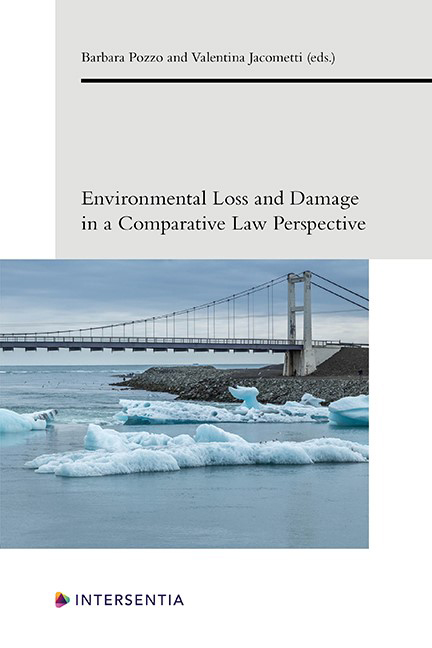Book contents
- Frontmatter
- Preface
- Contents
- List of Authors
- PART I LIABILITY FOR ENVIRONMENTAL HARM IN THE EU
- PART II PRIVATE AND CORPORATE ENVIRONMENTAL LIABILITY
- PART III THE ROLE OF CRIMINAL LIABILITY
- PART IV LEGAL TRANSPLANTS IN THE ENVIRONMENTAL FIELD: THE CASE OF ENVIRONMENTAL LIABILITY
- PART V STATE AND INTERNATIONAL ENVIRONMENTAL LIABILITY
- PART VI CLIMATE CHANGE LIABILITY
- PART VII LIABILITY, CLIMATE CHANGE AND NATURAL HAZARDS: THE ROLE OF INSURANCE
- PART VIII REAL COMPENSATION AND OFFSET REGIMES: THE STRATEGY OF “NO NET LOSS”
- About the Editors
Extended Producer Responsibility in the EU: Achievements and Future Prospects
Published online by Cambridge University Press: 26 May 2021
- Frontmatter
- Preface
- Contents
- List of Authors
- PART I LIABILITY FOR ENVIRONMENTAL HARM IN THE EU
- PART II PRIVATE AND CORPORATE ENVIRONMENTAL LIABILITY
- PART III THE ROLE OF CRIMINAL LIABILITY
- PART IV LEGAL TRANSPLANTS IN THE ENVIRONMENTAL FIELD: THE CASE OF ENVIRONMENTAL LIABILITY
- PART V STATE AND INTERNATIONAL ENVIRONMENTAL LIABILITY
- PART VI CLIMATE CHANGE LIABILITY
- PART VII LIABILITY, CLIMATE CHANGE AND NATURAL HAZARDS: THE ROLE OF INSURANCE
- PART VIII REAL COMPENSATION AND OFFSET REGIMES: THE STRATEGY OF “NO NET LOSS”
- About the Editors
Summary
INTRODUCTION
The rationale behind extended producer responsibility (EPR) is to make producers responsible for the environmental impacts of their products from design to the post-consumer phase. EPR was, therefore, expected to stimulate design for the environment (DfE); reduce the amount of waste destined to final disposal, while increasing separate collection and recycling; and internalise the costs of waste collection and management, in accordance with the “polluter pays” principle.
Countries around the world have defined and applied EPR in very different ways. However, it is usually recognised that the principle comprises, at least, a physical and a financial dimension, which can be implemented through different instruments, sometimes used in combination. In the EU, the principle has been incorporated into several pieces of waste legislation. In particular, it is stated as a “general requirement” by the Waste Framework Directive (WFD) and is applied by the Packaging Waste Directive, the End-of-Life Vehicles (ELVs) Directive, the Batteries Directive and the Waste Electrical and Electronic Equipment (WEEE) Directive (hereinafter referred to collectively as the EPR directives). The implementation of this legislation has resulted in the flourishing of EPR systems across Europe. A study by the OECD highlights that of over 395 EPR policies adopted globally in the period 1970–2013, 164 have been introduced by EU Member States.
After more than 20 years of experience in the EU with EPR, this chapter evaluates whether the environmental objectives associated with the advocacy of the principle have been met. Secondly, it discusses EPR's future prospects, by considering how its application can be improved to fully reach both its original objectives and, possibly, more ambitious ones.
The remainder of the chapter is structured as follows. Section 2 provides a short overview of EPR systems in the EU. Section 3 describes the environmental results achieved by EU EPR systems. Section 4 focuses on EPR future prospects, in the light of the recent amendments to the WFD. Section 5 concludes.
Most of this work is related to the activities of the European Topic Centre on Waste, Materials and the Green Economy (ETC/WMGE), funded by the European Environment Agency.
EPR SYSTEMS IN THE EU: AN OVERVIEW
Member States’ experience with EPR is mainly driven by the EPR directives, which establish waste collection/management requirements to be met by producers, in order to achieve binding collection, recycling and recovery targets.
- Type
- Chapter
- Information
- Environmental Loss and Damage in a Comparative Law Perspective , pp. 133 - 146Publisher: IntersentiaPrint publication year: 2021



